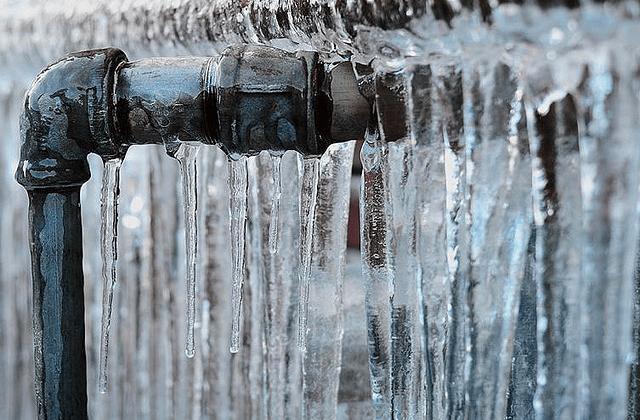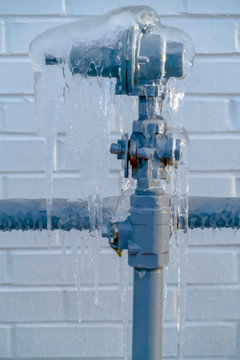Important Advice for Avoiding Frozen Pipes in Winter Seasons
Important Advice for Avoiding Frozen Pipes in Winter Seasons
Blog Article
Do you find yourself searching for advice about Prevent Frozen Pipes ?

Winter can wreak havoc on your plumbing, especially by freezing pipes. Here's exactly how to prevent it from happening and what to do if it does.
Introduction
As temperature levels decrease, the danger of frozen pipelines boosts, possibly resulting in expensive repair services and water damage. Comprehending just how to prevent frozen pipelines is crucial for home owners in chilly climates.
Comprehending Frozen Pipelines
What creates pipelines to ice up?
Pipelines freeze when subjected to temperatures listed below 32 ° F (0 ° C) for extended durations. As water inside the pipelines ices up, it increases, taxing the pipe walls and potentially causing them to burst.
Risks and problems
Frozen pipelines can lead to water system interruptions, building damages, and pricey repairs. Burst pipelines can flood homes and trigger extensive structural damage.
Indicators of Frozen Pipeline
Recognizing frozen pipelines early can prevent them from rupturing.
How to identify icy pipelines
Look for decreased water circulation from faucets, unusual odors or sounds from pipelines, and noticeable frost on revealed pipelines.
Prevention Tips
Insulating susceptible pipes
Wrap pipes in insulation sleeves or utilize warm tape to secure them from freezing temperatures. Concentrate on pipelines in unheated or exterior areas of the home.
Heating methods
Keep interior spaces sufficiently heated, particularly areas with plumbing. Open up cupboard doors to allow warm air to flow around pipelines under sinks.
Safeguarding Outside Plumbing
Yard hoses and exterior taps
Separate and drain pipes yard hoses before wintertime. Install frost-proof faucets or cover outdoor faucets with shielded caps.
What to Do If Your Pipelines Freeze
Immediate activities to take
If you presume icy pipes, keep faucets available to soothe pressure as the ice thaws. Utilize a hairdryer or towels soaked in warm water to thaw pipelines slowly.
Long-Term Solutions
Structural modifications
Take into consideration rerouting pipelines far from exterior wall surfaces or unheated areas. Include additional insulation to attic rooms, basements, and crawl spaces.
Updating insulation
Invest in top quality insulation for pipes, attics, and wall surfaces. Proper insulation assists keep consistent temperature levels and decreases the danger of icy pipelines.
Conclusion
Stopping icy pipelines requires proactive steps and fast actions. By recognizing the reasons, signs, and preventive measures, property owners can safeguard their plumbing during cold weather.
5 Ways to Prevent Frozen Pipes
Drain Outdoor Faucets and Disconnect Hoses
First, close the shut-off valve that controls the flow of water in the pipe to your outdoor faucet. Then, head outside to disconnect and drain your hose and open the outdoor faucet to allow the water to completely drain out of the line. Turn off the faucet when done. Finally, head back to the shut-off valve and drain the remaining water inside the pipe into a bucket or container. Additionally, if you have a home irrigation system, you should consider hiring an expert to clear the system of water each year.
Insulate Pipes
One of the best and most cost-effective methods for preventing frozen water pipes is to wrap your pipes with insulation. This is especially important for areas in your home that aren’t exposed to heat, such as an attic. We suggest using foam sleeves, which can typically be found at your local hardware store.
Keep Heat Running at 65
Your pipes are located inside your walls, and the temperature there is much colder than the rest of the house. To prevent your pipes from freezing, The Insurance Information Institute suggests that you keep your home heated to at least 65 degrees, even when traveling. You may want to invest in smart devices that can keep an eye on the temperature in your home while you’re away.
Leave Water Dripping
Moving water — even a small trickle — can prevent ice from forming inside your pipes. When freezing temps are imminent, start a drip of water from all faucets that serve exposed pipes. Leaving a few faucets running will also help relieve pressure inside the pipes and help prevent a rupture if the water inside freezes.
Open Cupboard Doors
Warm your kitchen and bathroom pipes by opening cupboards and vanities. You should also leave your interior doors ajar to help warm air circulate evenly throughout your home.

We had been made aware of that editorial about Preventing and dealing with frozen pipes from an associate on our other web page. Are you aware of somebody who is very much interested in the topic? Be sure promote it. We value reading our article about Winter Plumbing Precautions: Preventing Frozen Pipes.
Call Today Report this page